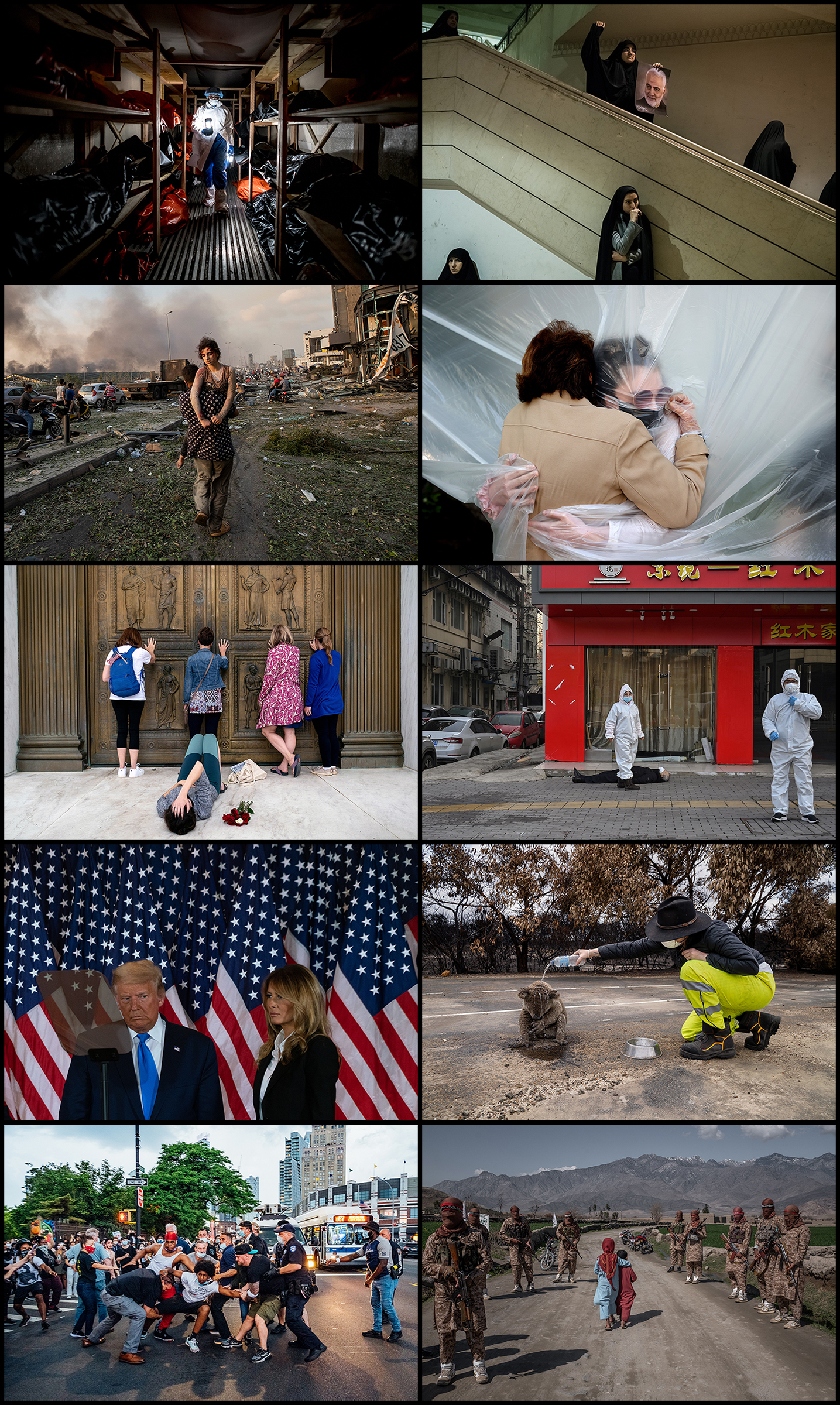As a measure of time, a year can seem like an abstraction. We mark it out carefully in months and days, but by the time we reach Dec. 31, it’s sometimes hard to pinpoint what happened when. Our brains have their own way of rewriting time, of blurring events we’d rather not remember, or intensifying those we cannot forget.
What’s more, none of us can be in more than one place at once. This is where photographs become invaluable, as a record of events and experiences we have shared as citizens of the world, even if we weren’t present to witness them firsthand. The COVID-19 crisis has touched us all. But a photograph of a man whose job is to shepherd corpses from an overflowing hospital morgue to a refrigerated trailer brings just one aspect of this crisis into sharp relief: suddenly, we have a connection with the daily life of a worker whose job is to care for those who could not be saved. Similarly, it was anguishing to hear news of the August explosion in Beirut that killed and injured so many, as well as displacing hundreds of thousands of people from their homes. A photograph of a man carrying his injured niece makes the intensity of this mass tragedy feel deeply personal.
This is what a great photograph can do. Even if our own lives were untouched by the deadly Australian bushfires, a photograph of a volunteer aiding a koala in distress reinforces the responsibility we all have as stewards of the Earth. And just one moment from a Black Lives Matter march in Brooklyn reminds us that the passionate protests of 2020 aren’t just a set of events in the past; they represent an ongoing struggle. These and other moments, captured by photographers around the world, are the heart of TIME’s top photographs of the year. To revisit these images, or to see them for the first time, is to acknowledge not just where we’ve been, but who we are. — Stephanie Zacharek, with reporting by Andrew Katz

‘A Light in the Darkness’
This spring, staff and patients at Brooklyn’s Wyckoff Heights Medical Center allowed Meridith Kohut to document their reality on the front line of the pandemic as COVID-19 killed thousands in New York City. They wanted to warn the rest of the country to avoid their fate. On April 22, she captured Kyle Edwards gathering lanterns from inside one of the refrigerated semitrailers that held the overflow of corpses. “Each body bag represented so much pain and suffering, lives lost and families upended,” says Kohut, haunted that the warning went unheeded.
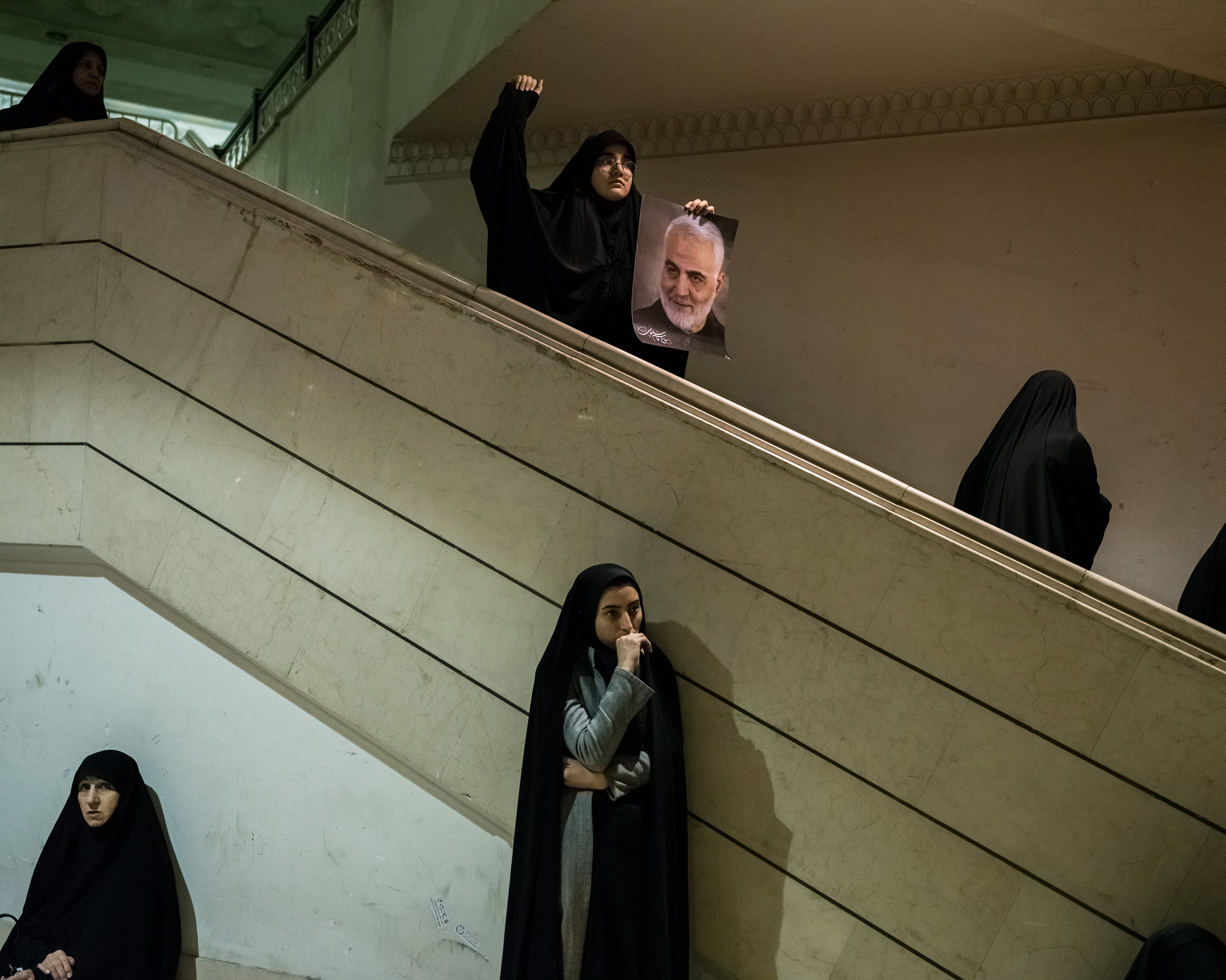
‘Their Sadness and Anger Were Real’
At a mosque in Tehran, on Jan. 5, Iranian women mourn Qasem Soleimani following his assassination in Baghdad. “They felt hurt and wanted revenge,” photographer Newsha Tavakolian recalls. Inside, the atmosphere was intense. “I searched long for how to capture this and found this scene, a quiet moment amid what was a whirlpool of people. The woman raising her fist while holding the poster, the others in their own thoughts. They were wandering around, alone with their feelings.”
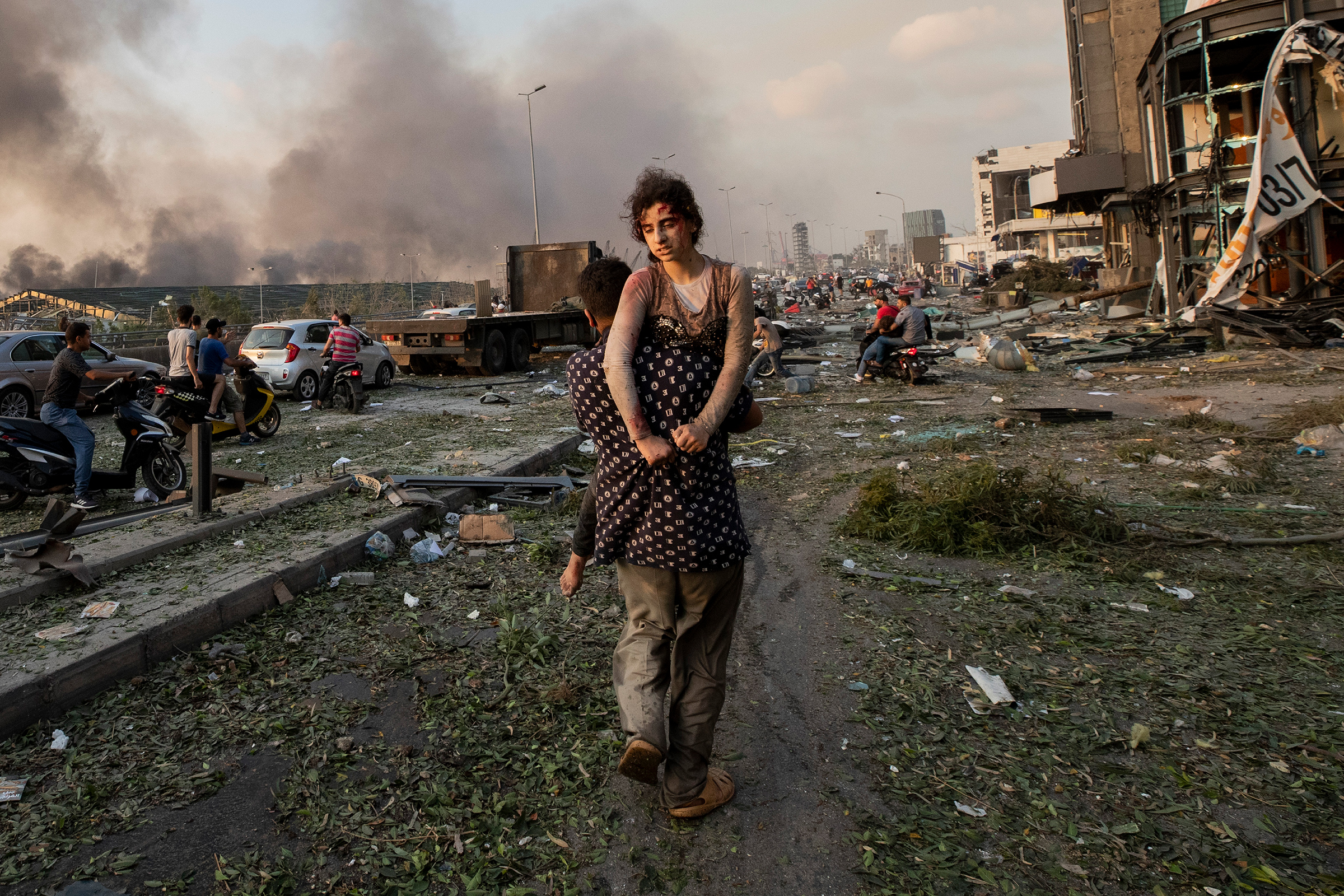
‘I Couldn’t Forget Her Face’
Hoda Kinno, 11, is carried by her uncle Mustafa after a massive explosion at the port in Beirut on Aug. 4. “When I reached the site, I could not believe what I was seeing,” writes photographer Hassan Ammar. “I was taking pictures of everything when I saw men holding two injured girls on the highway opposite the port. I followed one until they reached a military vehicle that was being loaded with injured people to be evacuated to a hospital.”
In the days afterward, Ammar remained curious about what had happened to her. It took about two weeks, but Ammar found the family south of the capital. The blast had devastated them. The Associated Press reported that Hoda suffered a broken neck and other injuries, and her 15-year-old sister, Sedra, was killed. “That day in Beirut is a day that changed our lives in Lebanon,” adds Ammar, “changed me as a human and a photographer.”

‘She Didn’t Want to Let Go’
On May 24, photographer Al Bello’s sister called to say her in-laws would be visiting in Wantagh, N.Y., and wanted to hug everyone; a drop cloth hung from a clothesline would serve as a barrier. Curious, he stopped by. After Mary Grace Sileo met her grandson at the “hug station,” she began to cry. “Whoa,” Bello remembers thinking, “this escalated quickly.” He captured the embraces over 45 minutes, including that of Sileo and granddaughter Olivia Grant, shown here. “They were long hugs,” he says.

‘It Felt Really Poignant to Me’
Jacquelyn Booth mourned the death of Justice Ruth Bader Ginsburg on the marble porch of the Supreme Court on Sept. 26 while conservative supporters of Judge Amy Coney Barrett prayed at its doors. Thousands marched in Washington, D.C., that day in an event organized by Franklin Graham hours before Trump announced his nomination of Barrett to replace Ginsburg.
“It was interesting because people were walking around her and asking their friends to take photos kind of angled up so they wouldn’t have this crying woman in there at the Supreme Court,” Schaff says of the scene that afternoon. “I sat there for a while, watching, and then these four women went up and put their hands up. I saw her hand on her face, and her composition, and the duality of the emotions that everyone was feeling. It felt really poignant to me of the divisions in this country and how deeply people feel about their beliefs right now.”
Schaff knew quickly that she had something special. After the women prayed, she approached them to introduce herself and make sure she was representing them accurately. “Then I went and sat down next to Jacquelyn and I asked if she was okay and if she needed anything,” Schaff says. “She said she was fine but that she was in mourning and letting herself have that time in a public space.” One month later, Barrett was confirmed by the Senate in a 52-to-48 vote.
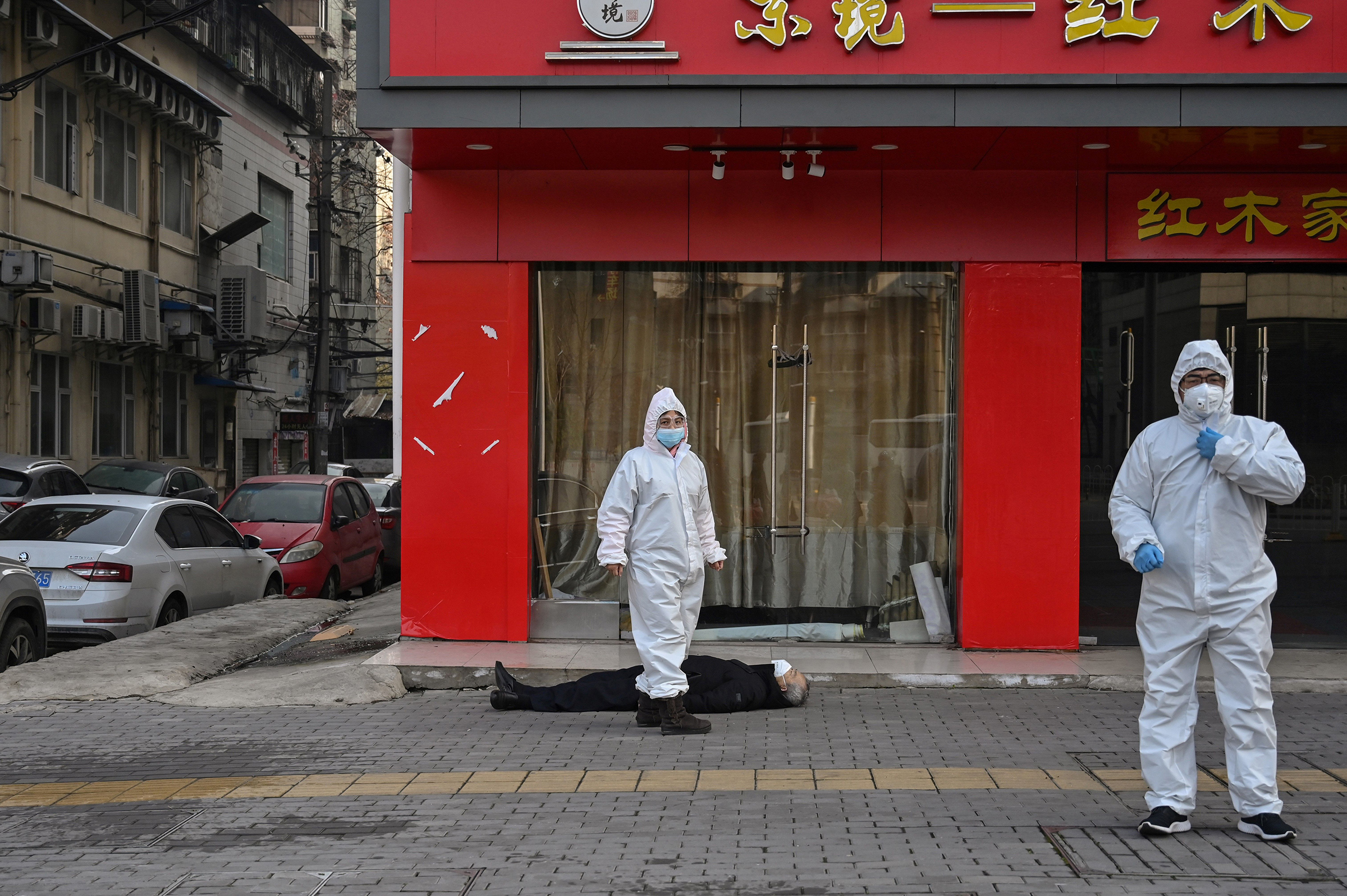
‘Nobody Would Touch Him’
Hector Retamal, an AFP photographer based in Shanghai, arrived in Wuhan by train on Jan. 23 as the city was being locked down. “Wuhan had indeed become a ghost town,” he recalled earlier this year. “People on the streets were only out for two or three reasons: to buy food, to go to a drugstore or to visit a hospital.”
On Jan. 30, Retamal and a colleague were walking to a hospital when they spotted the man on the ground, a block away from a different hospital. “There were two women looking at the man without doing anything. When they saw us, they shouted at us. They seemed to tell us not to get any closer,” Retamal remembered. After a while, others in protective suits arrived; they approached the man but would not touch him. The journalists moved across the street at one point, still eyeing the scene.
“Eventually a forensics team got to the place, covered him and his body was taken away in a yellow plastic bag. After that they spread disinfectant on the floor,” he added. The journalists could not confirm whether the man was a victim of the disease. Retamal, who was in Wuhan for more than a week, concluded: “It is a city which lives in fear.”
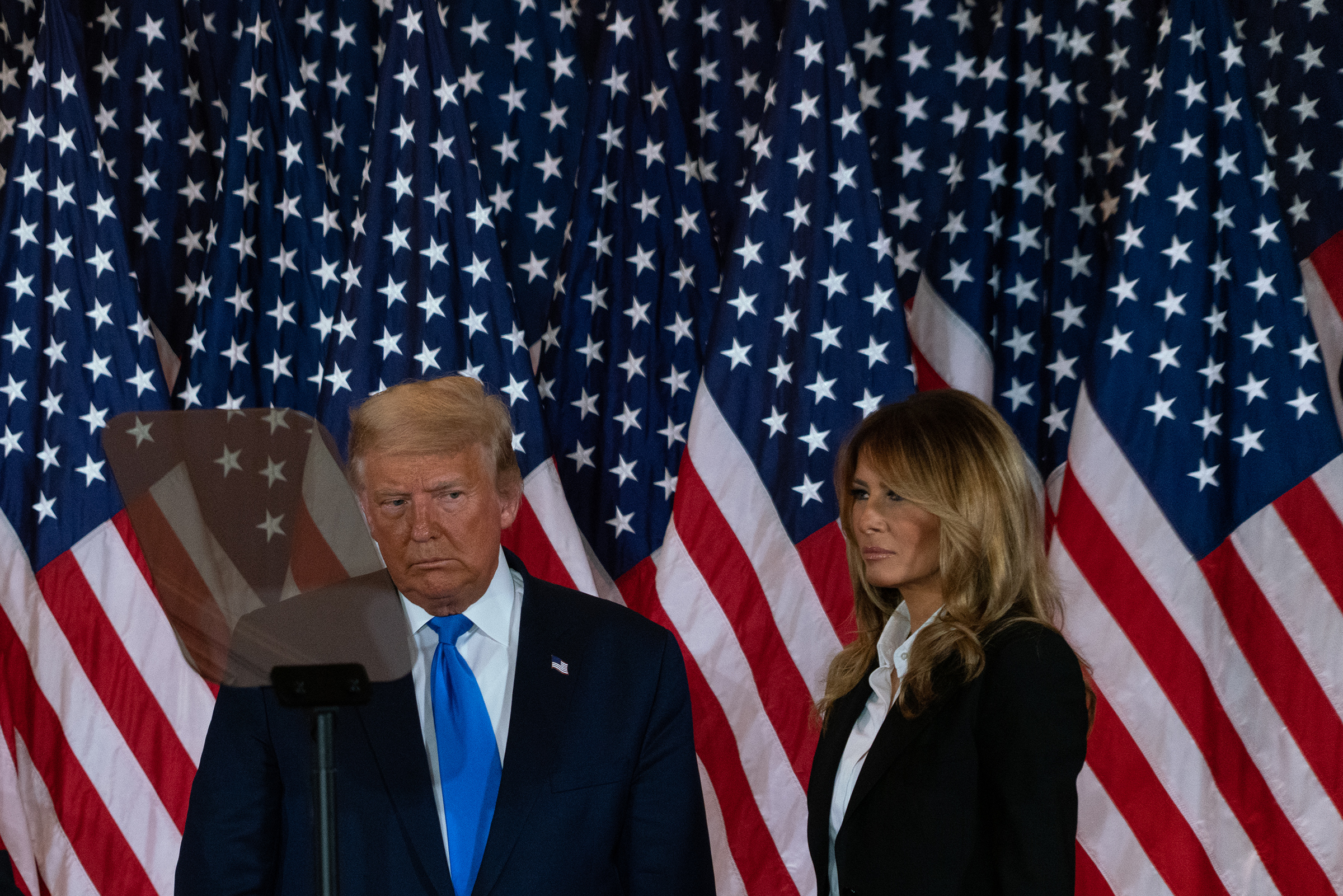
‘It’s Hard to Know What He Knew’
Photographer Peter van Agtmael has followed Donald Trump and his rallies since 2016 — “part re-election campaign, part variety show,” he says. “I started to get kind of accustomed to his mannerisms and his expressions, which had a certain kind of consistency to them. Even within his spontaneity and freewheeling, there was intentionality and control.”
On Nov. 4, well after midnight and with the expectation that the vote that remained to be counted (mail-in ballots and early votes) would skew heavily Democratic, van Agtmael walked into a “very, very muted” White House East Room room “looking, I suppose, for the cracks in the façade” as Trump addressed American voters. In many ways, he says, the President maintained his standard range of expressions. “But there was also a clear tension and stress and anger and, for a brief moment, when Vice President Mike Pence was speaking, that kind of rigorous control of some of his emotions dropped for just a few seconds.”
It would be the only image of vulnerability that van Agtmael made that night. “By conventional standards, it wouldn’t be seen as a particularly telling moment,” he adds. “What’s striking is that by the standards of Trump, it is a very vulnerable moment. It’s specific to the individual.”
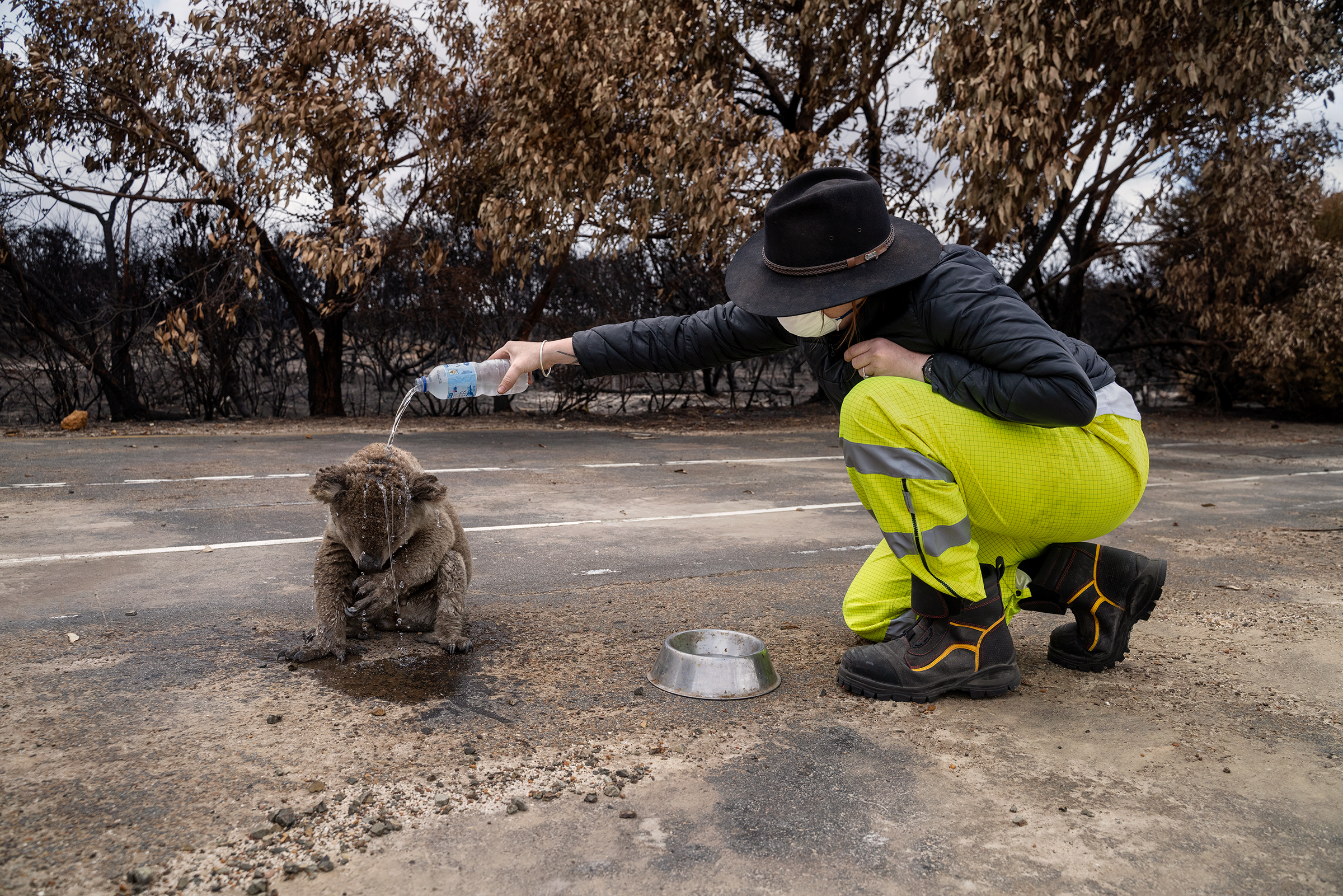
‘It Left Without a Fight’
Australia’s bushfire season killed or displaced more than 3 billion animals. As Adam Ferguson photographed at a melted playground on Kangaroo Island on Jan. 16, he spotted a still grey object in the background. “As I approached, I realized it was a koala,” he recalls. A volunteer from a nearby fire-response team noticed and came over with water. “Under normal circumstances, the koala would have scrambled up a tree,” says Ferguson, “but it was exhausted and dehydrated as the woman approached with her offering and poured it on its head.” Minutes later, it was hustled to a nearby shelter.
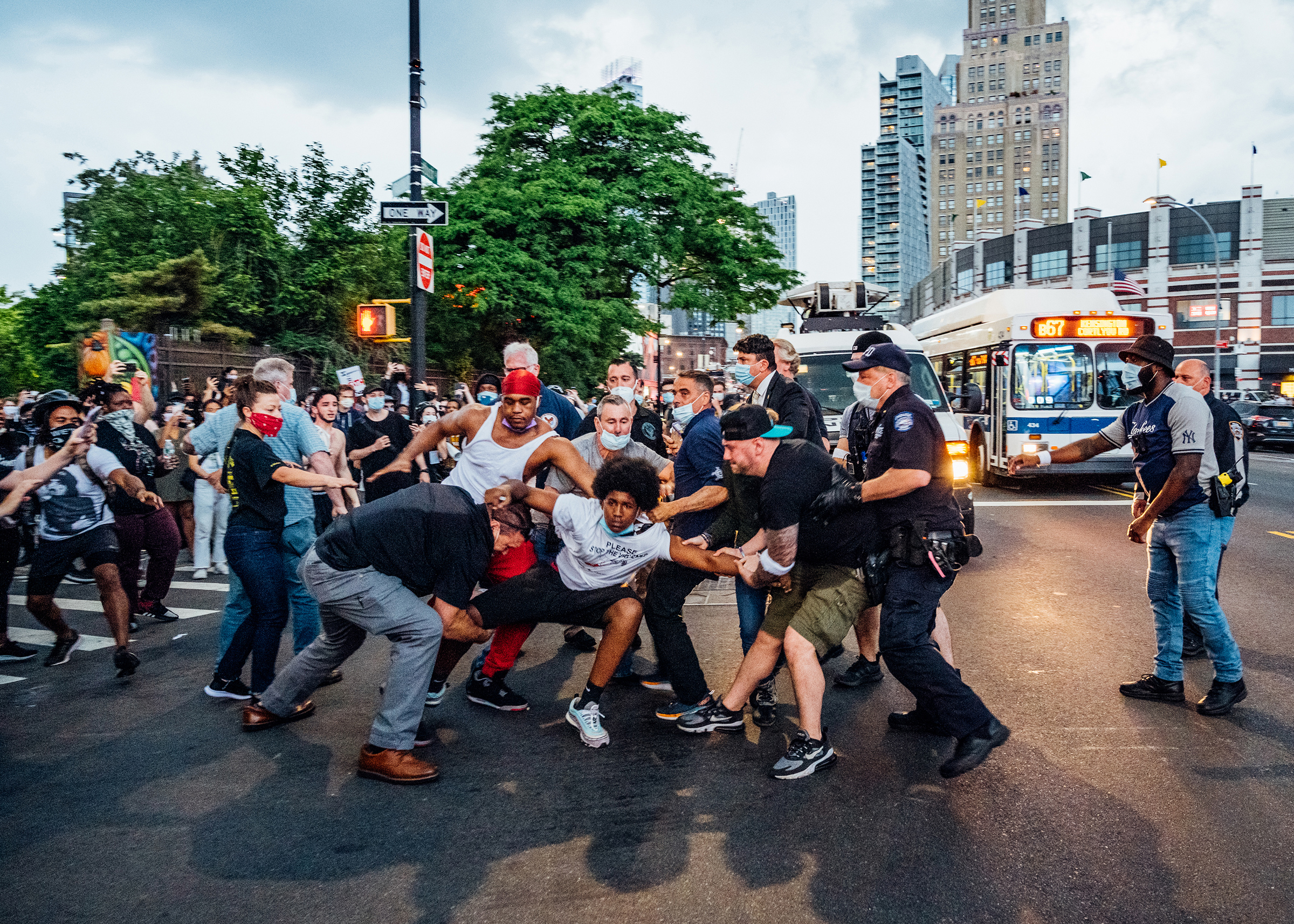
‘That Day Shaped My Whole Year’
George Floyd was killed by police in Minneapolis on a Monday. By Friday, America was different. Malike Sidibe, at 23, was moved to attend and photograph a protest for the first time in his life. In Brooklyn, on May 29, he saw protesters struggling with police over one of their own. Being there, Sidibe says, “changed the way I view the world and how I carry myself in this world.”

‘It Really Felt Like a Show of Force’
On March 13, weeks after the U.S. and the Taliban signed a peace agreement, Kabul-based photographer Jim Huylebroek and colleagues took advantage of the lull in fighting to visit insurgents in the eastern Laghman province. On the way, their vehicle was stopped by an elite Taliban Red Unit. “They welcomed us in a friendly way, but things felt a bit tense,” he says. As the journalists prepared to proceed, two children walked up the road and past the fighters. “For me,” says Huylebroek, “it shows the harsh reality in which children grow up.”
More Must-Reads from TIME
- Cybersecurity Experts Are Sounding the Alarm on DOGE
- Meet the 2025 Women of the Year
- The Harsh Truth About Disability Inclusion
- Why Do More Young Adults Have Cancer?
- Colman Domingo Leads With Radical Love
- How to Get Better at Doing Things Alone
- Michelle Zauner Stares Down the Darkness
Contact us at letters@time.com
